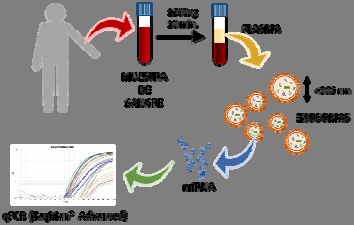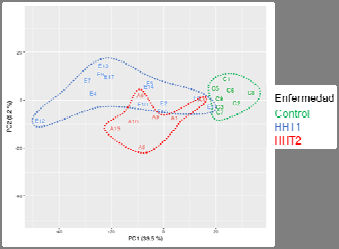Molecular Method that radically improves the diagnosis of Hereditary hemorrhagic telangiectasia (HHT). The Granada University, Health and Progress Foundation, and the CSIC have developed a diagnostic molecular system for the HHT by getting a simple liquid biopsy from the patient.
Industrial partners are being sought to collaborate through a patent license agreement to use this
molecular diagnostic system with the possibility of informatics support.
A fast and reliable molecular system for the diagnosis of HHT
The HHT or Rendu-Osler-Weber syndrome is a vascular autosomal dominant genetic dysplasia, considered as a rare disease. 85% of the patients present mutations in heterozygosis in the endoglin or in the ALK gene, generating HHT1 and HHT2 respectively, although there are other minority variants.
Currently is used for the HHT diagnosis an agreed clinic profile known as “the Curaçao’s diagnostic criteria and they include these four properties. 1) Recurrent epistaxis; 2) Telangiectasias in skin and/or mucosa; 3) Arteriovenous malformation on internal organs; and 4) Family background.
The diagnosis of HHT will be made if three of four of these criteria are present. If only one or two criteria are present, it is recommended to determine the genetic mutation, but for technical reasons, it is currently not easy to perform.
This invention allows to analyze the expression patron of the microRNAs that carry the plasmatics exosomes that are HHT characteristic for the fast and easy HHT diagnosis
Main innovations and advantages
· Represents a huge advance in the HHT diagnosis respect to the current Curaçao’s diagnostic criteria.
· It consists of the use of a set of miRNAs transported in the plasmatic exosomes, to obtain data to diagnose · HHT and differentiate if the patient has the variant · HHT1 or HHT2, or if it does not correspond to any of these two variants.
· Importantly, it allows to measure the severity of the disease according to the relative expression levels of some of the molecular markers analyzed.
· An HHT diagnostic kit or device could be sold for its easy detection anywhere in the world.
· Importantly, it allows the diagnosis before the symptoms appear · This is impossible with the current methods, because the symptoms appear progressively for years, delaying the diagnosis.







